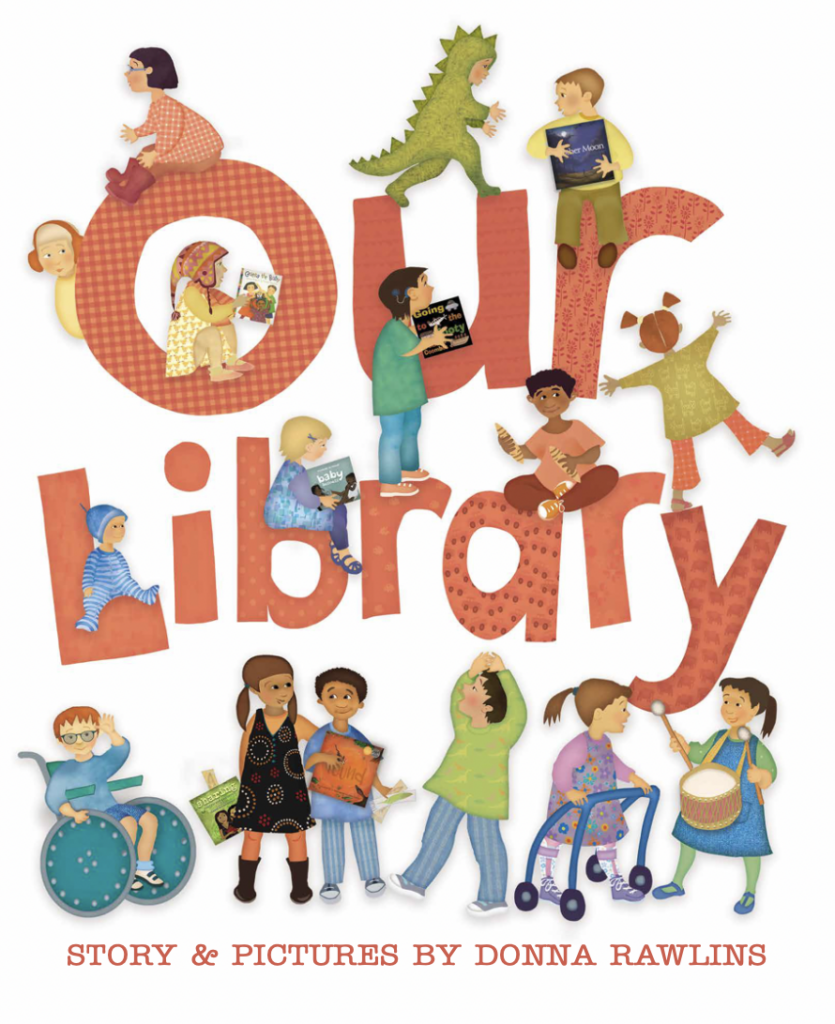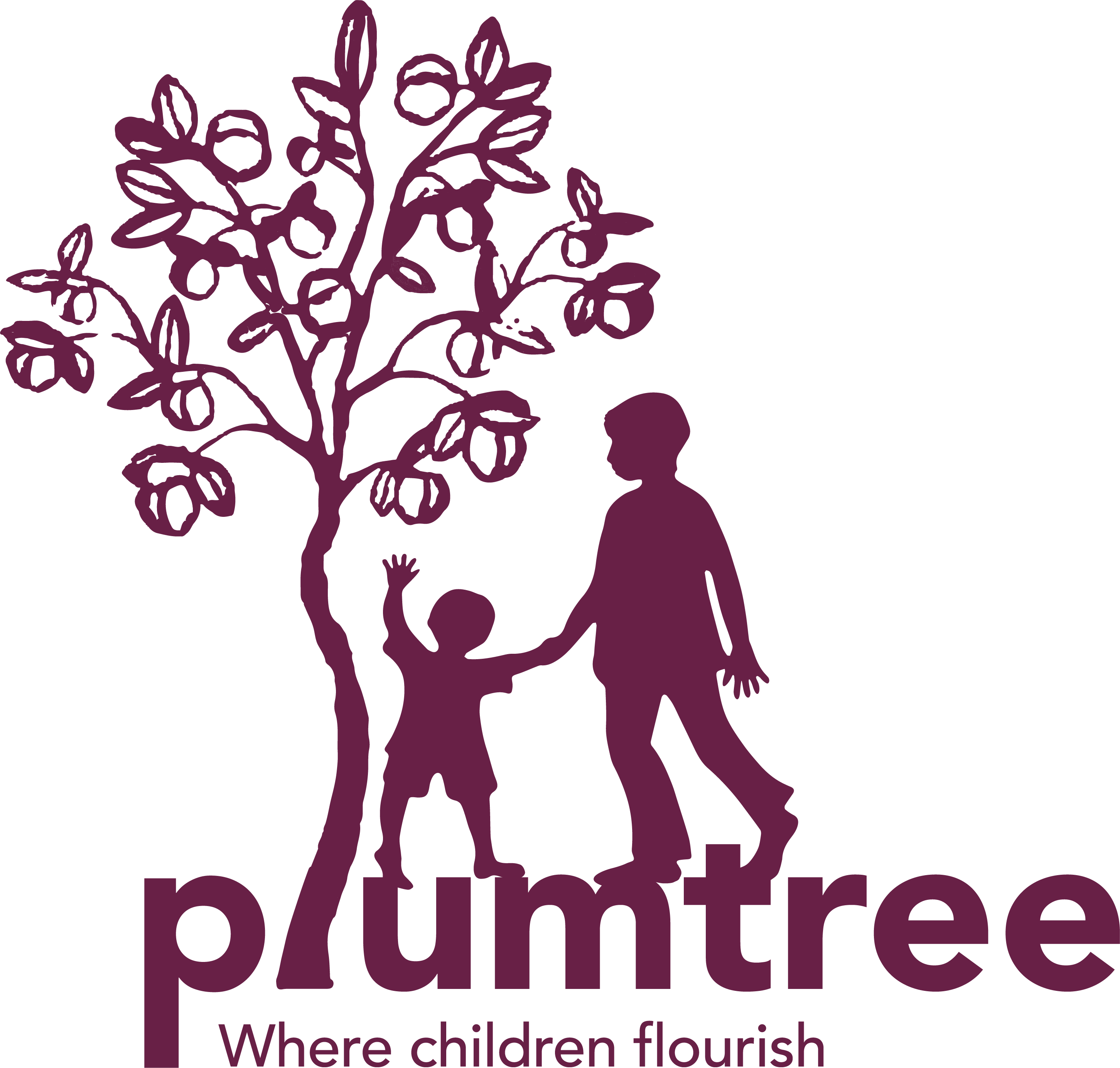Lesson 4: “Our Library” children’s picture book

This children’s picture book by Donna Rawlins was developed by the Libraries as Community Connectors project for reading at Storytimes.
Its themes include welcoming children from diverse cultures, different family structures, genders, and children with neurodiversity, disability or developmental delay.
The book also explores different ways of reading stories and using the library based on a child’s developmental age.
There are many opportunities for Storytime facilitators to engage with children and their parents before and during reading Our Library. These activities can help stimulate the imagination or educate on disability and inclusion. Parents who purchased Our Library can adapt activities to use at home.
Some examples of activities that can be used with Our Library and other books can be found in Module 5.
All public libraries across Australia received a copy of Our Library for free in March 2022. All councils involved with the pilot also received a large copy of the book.
Author and illustrator: Donna Rawlins
ISBN 9781742036342
Format: Hardback
Specifications: 32pp, 270mm x 216mm, full colour
Interest level: Age 4+
Reading level: Age 8+
Category: Fiction
Additional hardcover copies can be purchased from wdog.com.au for $24.99 (a discount is available for libraries when purchasing over 10 copies) and large copies for $44.99 plus postage, or at a discount through your local library supplier.
Synopsis
Our Library follows Suzy, a children’s librarian, who plans fun activities for multicultural families and children of all abilities. On every day of the week, she holds a different activity for everyone to enjoy. Children borrow books to share with family members at home.
About the author and illustrator
Donna Rawlins is an acclaimed illustrator, book designer and teacher who has been creating books for children for most of her life. In 2003, she received the prestigious Lady Cutler Award presented by the Children’s Book Council of New South Wales for her outstanding contribution to the children’s book industry. Donna lives in the Lower Blue Mountains outside Sydney, New South Wales.
Writing style
Our Library is written in a child-friendly, conversational style. The language is familiar to infants and Stage 1 readers. The book can be read independently by older children.
Illustration style
The book’s illustrations were drawn and collaged digitally. The different textures and fresh colour palette create a sense of joy and excitement. The images portray children and adults of different ethnicities and abilities.
Notes for engagement activities
Our Library has many opportunities to educate children and parents about disability, diversity and inclusion. Below are some observations you can comment on during Storytime or while reading the book to your child. Let the illustrations inspire other comments, and have fun!
Inner cover
The languages on the bunting (the flags) are: Arabic, Bahasa Indonesian, Darug, German, Hmong, Italian, Japanese, Korean, Maltese, Mandarin, Maori, Polish, Samoan, Spanish, Somali, Swahili, Tagalog, Turkish, Urdu and Vietnamese.
There are many more languages that are not on the bunting.
Monday is making-new-friends day page
- The girl on the right is making friends with a boy wearing headphones, which are also called sensory earmuffs. Sensory earmuffs help people who are sensitive to noises by blocking out sounds
- Tian Tian is Chinese, and his name means “double heaven”
- The second welcome sign is in Maori, the language spoken by the indigenous people of New Zealand
Tuesday is dinosaur day page
- Some children with disability or delay may like to move around the room instead of sitting down, like Zak
- Others may need a special comfort toy to help them enjoy activities; that’s why the boy wearing the blue earmuffs has a cat toy instead of a dinosaur
Amina and Zak at home page
- Jadda is Arabic for “grandmother” in Muslim families
- Some people use gestures, signing or electronic devices with or instead of talking to help them communicate
- Zak has invented a sign for Megalodon, which is made up of the sign for “large” and the sign for “shark”
- Zak’s father is signing “scary”
Wednesday is I can do it day page
- Bridget has Down syndrome, so she has weaker hand muscles and uses a shaving brush to paint because it’s more comfortable
Thursday is wiggle and jiggle day page
- Yasmin uses orthotics and a walker that help her move
- Some people with a disability are very sensitive to noisy places and use earmuffs, like the boy near the Boats and Buses sign
- Some people with a disability enjoy being in a music and dance group as an observer, others like dancing and making music
Friday is nature day page
- The boy in the green t-shirt has a cochlear implant, an electronic device that gives a sense of sound for people who are hearing impaired
- Lyra, Hartley and their grandmother are Aboriginal
- First Nations is another way to describe the many Aboriginal and Torres Strait Islander people who first lived in Australia, or the first people who lived in other countries and places
- All the books in the background are published by Magabala Books and created by First Nations artists
- The fabrics on Lyra and her grandmother’s dress were painted by Leanne Mulgo Watson, a First Nations artist
- Leanne’s mother is Aunty Edna Watson, Elder of the clan of the Darug people of the Dyarubbin (Hawkesbury) area
- The children calling Lyra’s gran “Aunty” means that they have been given permission to use this term of respect
Checking out books page
In the poster next to the clock on the right-hand page:
- The text means “Open Your Heart to Country”
- It is written the Darug language
- The poster is illustrated by Leanne Mulgo Watson
The poster on the left is also by Leanne Mulgo Watson, and it is called Kutukulung, which means “turtle.”
Library staff can talk about which Country the library is on, or ask a local Elder to visit their library and give a presentation about these and related topics.
Everyone and everything day page
The illustration shows a variety of family types including single parents, stay-at-home dads, same-sex families, carers and grandparents.
